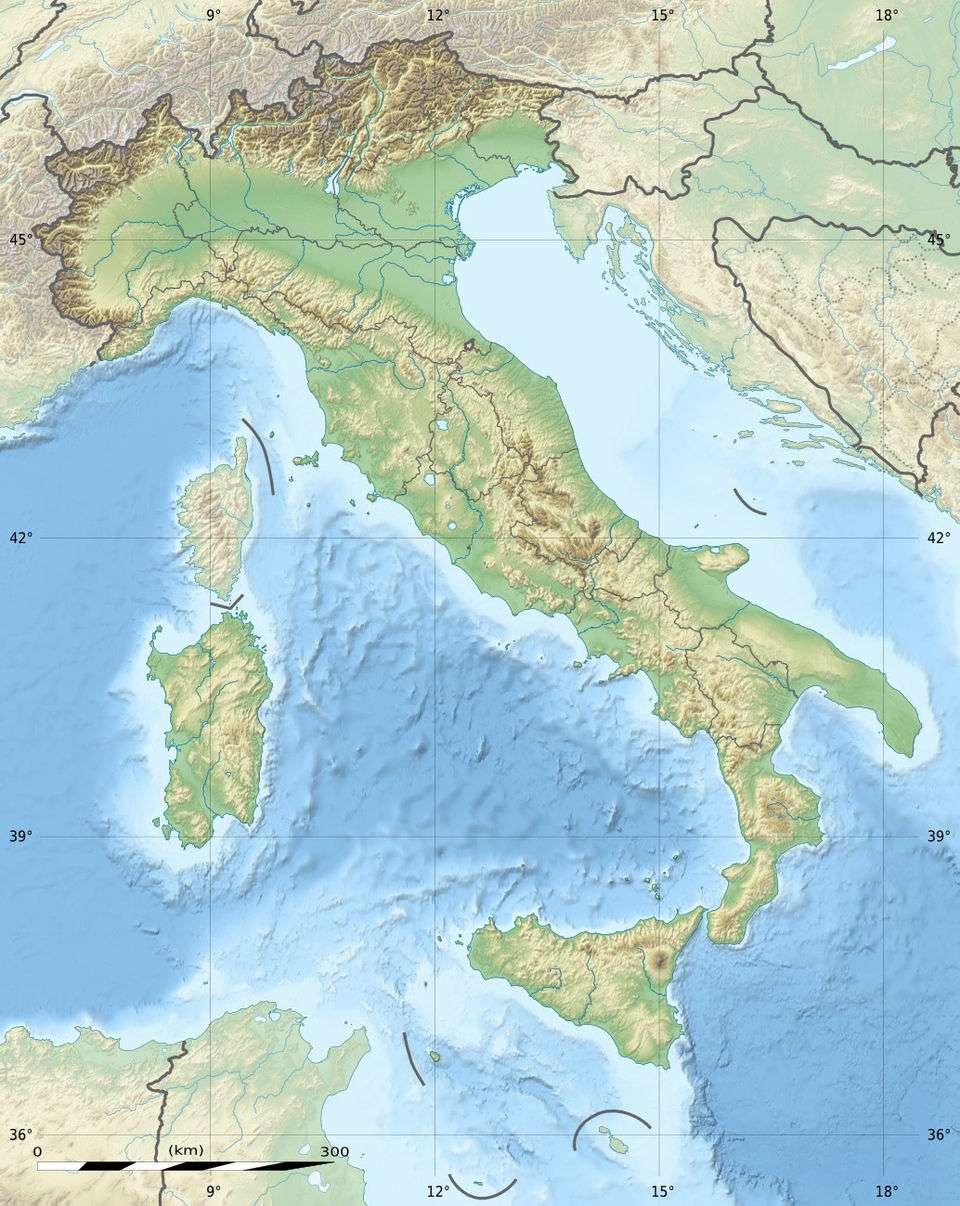Archimede solar power plant
| Archimede solar power plant | |
|---|---|
 Location of Archimede solar power plant in Italy | |
| Country | Italy |
| Location | Priolo Gargallo |
| Coordinates | 37°8′0″N 15°12′58″E / 37.13333°N 15.21611°ECoordinates: 37°8′0″N 15°12′58″E / 37.13333°N 15.21611°E |
| Status | Operational |
| Commission date | 2010 |
| Owner(s) | Enel |
| Solar field | |
| Type | CSP |
| CSP technology | Parabolic trough |
| Thermal power station | |
| Combined cycle? | yes |
| Power generation | |
| Thermal capacity | 20 MWth[1] |
Archimede solar power plant is a concentrated solar power plant at Priolo Gargallo near Syracuse in Sicily, Italy. The plant was inaugurated on 14 July 2010.[2][3][4] It is the first concentrated solar power plant to use molten salt for heat transfer and storage which is integrated with a combined-cycle gas facility.[2][4][5][6] It uses technology developed by ENEA and Archimede Solar Energy, a joint venture between Angelantoni Industrie and Siemens Energy. Archimede is owned and operated by Enel.[2]
The plant is called "Archimedes" (the famous resident of the nearby Magna Graecia Hellenistic city of Syracuse) after the rows of huge parabolic mirrors used to capture the sun's rays, which recall the "burning mirrors" that Archimedes is said to have used to set fire to the Roman ships besieging Syracuse during the Siege of Syracuse (214–212 BC).[2] The existing gas-fired power plant on the site is augmented by Archimede solar field.
Description

The solar thermal power plant consists of a field of about 30,000 square metres (320,000 sq ft) of mirrors (the parabolic collectors) that concentrate sunlight onto 5,400 metres (17,700 ft) of pipe carrying the molten salt fluid. Molten salt is used as the heat transfer fluid in solar field and is heated to 550 °C (1,022 °F). The thermal energy is then stored in a hot tank and is used to produce high pressure steam to run steam turbines for electricity generation, reducing the consumption of fossil fuels and, as a result, enhancing the environmental performance of the combined-cycle plant. The solar collectors (the parabolic mirrors and pipes or receivers), together with a steam generator and two heat storage tanks – one cold and one hot – make up the solar portion of the system.
When the sun shines, the thermal fluid drawn from the cold tank is circulated through the network of parabolic collectors, where it is heated to a temperature of 550 °C (1,022 °F) and injected into the hot tank, where the thermal energy is stored. The fluid is then drawn from the hot reservoir to produce steam at high pressure and temperature, which is sent to Enel's nearby combined-cycle plant, where it contributes to electricity generation.
This system enables the plant to generate electricity at any time of the day and in all weather conditions until the stored thermal energy is depleted.
The addition of the solar plant to the power station should significantly reduce the amount of gas burnt at the plant and cut carbon dioxide emissions by 7,300 tonnes.
See also
References
- ↑ "Progetto Archimede, l'energia solare può sostituire il petrolio". 2012-05-07. Retrieved 2015-04-06.
- 1 2 3 4 Backwell, Ben (2010-07-14). "Enel starts up its Archimede plant in world first for CSP". ReCharge. NHST Media Group. Archived from the original on 21 July 2010. Retrieved 2010-07-15.
- ↑ Babington, Deepa (2010-07-14). "Sicily plant offers Italy new impetus on solar front". Reuters. Retrieved 2010-07-15.
- 1 2 "At Priolo Enel inaugurates the "Archimede" power plant" (Press release). Enel. 2010-07-14. Retrieved 2010-07-15.
- ↑ "ENEL opens "world's first" molten-salt/solar plant". The Engineer. Centaur Media plc. 2010-07-14. Archived from the original on 2012-02-29. Retrieved 2010-07-15.
- ↑ Popham, Peter (2007-03-28). "Sicily to build world's first solar power plant". The Independent. Retrieved 2010-07-15.
External links
- Archimede on Enel website
- Guardian Environment Network - The world's first molten salt concentrating solar power plant